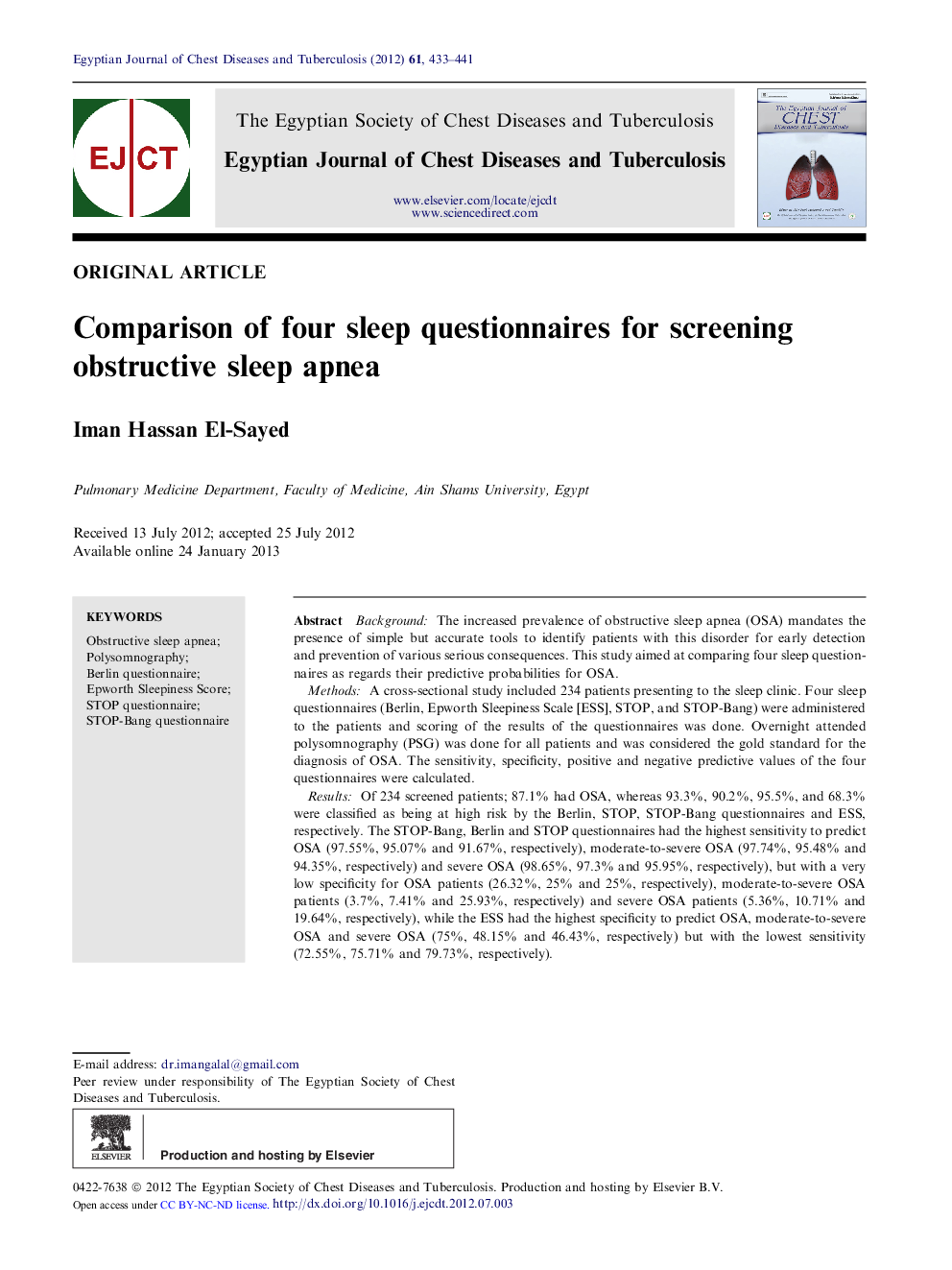| Article ID | Journal | Published Year | Pages | File Type |
|---|---|---|---|---|
| 3400287 | Egyptian Journal of Chest Diseases and Tuberculosis | 2012 | 9 Pages |
BackgroundThe increased prevalence of obstructive sleep apnea (OSA) mandates the presence of simple but accurate tools to identify patients with this disorder for early detection and prevention of various serious consequences. This study aimed at comparing four sleep questionnaires as regards their predictive probabilities for OSA.MethodsA cross-sectional study included 234 patients presenting to the sleep clinic. Four sleep questionnaires (Berlin, Epworth Sleepiness Scale [ESS], STOP, and STOP-Bang) were administered to the patients and scoring of the results of the questionnaires was done. Overnight attended polysomnography (PSG) was done for all patients and was considered the gold standard for the diagnosis of OSA. The sensitivity, specificity, positive and negative predictive values of the four questionnaires were calculated.ResultsOf 234 screened patients; 87.1% had OSA, whereas 93.3%, 90.2%, 95.5%, and 68.3% were classified as being at high risk by the Berlin, STOP, STOP-Bang questionnaires and ESS, respectively. The STOP-Bang, Berlin and STOP questionnaires had the highest sensitivity to predict OSA (97.55%, 95.07% and 91.67%, respectively), moderate-to-severe OSA (97.74%, 95.48% and 94.35%, respectively) and severe OSA (98.65%, 97.3% and 95.95%, respectively), but with a very low specificity for OSA patients (26.32%, 25% and 25%, respectively), moderate-to-severe OSA patients (3.7%, 7.41% and 25.93%, respectively) and severe OSA patients (5.36%, 10.71% and 19.64%, respectively), while the ESS had the highest specificity to predict OSA, moderate-to-severe OSA and severe OSA (75%, 48.15% and 46.43%, respectively) but with the lowest sensitivity (72.55%, 75.71% and 79.73%, respectively).ConclusionsThe sensitivity of Berlin, STOP and STOP-Bang questionnaires was very high yet, the low specificity of these questionnaires results in increased false positives and failure of exclusion of individuals at low risk.
